Sprawdź podobne artykuły:
 What Place Do Traditional Games Hold in Japanese Culture?
What Place Do Traditional Games Hold in Japanese Culture?
Traditional Japanese games are an integral part of the cultural heritage of the Land of the Rising Sun. They transcend the boundaries of mere entertainment, forming a significant part of social rituals, education, and daily life. Games such as Go, Shogi, and Hanafuda not only contributed to the development of strategic thinking and analytical skills but also served as tools for social interaction and communication. Over time, their symbolic value has grown, making them not just witnesses of history but active participants in shaping national identity. In festivals and holidays, these games are often used to strengthen community bonds, and native educational games like Karuta are still used to teach language and poetry.
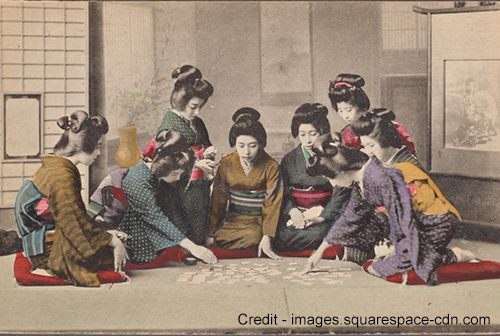
In the world of anime, traditional Japanese games often serve as key plot points, character characterization tools, or simply cultural backdrops. Series like "Hikaru no Go" or "Chihayafuru" are dedicated to the games of Go and Karuta respectively, presenting them in a way that highlights their depth and significance. Through anime, these games are presented to a new generation, both Japanese and international, maintaining their cultural relevance and ensuring that these traditions are never forgotten. Anime becomes a medium that not only preserves but refreshes tradition, passing it on in an attractive and accessible form.
Portrayal of Traditional Games in Anime
 "Hikaru no Go" (The Game of Go)
"Hikaru no Go" (The Game of Go)
The anime focuses on the game of Go, presenting it not just as entertainment, but as an important part of Japanese culture. The main character, Hikaru, accidentally discovers an ancient Go board, leading him to meet the spirit of a Go master. The series intricately presents the rules of Go, strategies, and competition in the professional world of the game, emphasizing its historical and contemporary significance.
"Chihayafuru" (Hyakunin Isshu Karuta Game)
"Chihayafuru" centers on karuta, a card-based memory game rooted in Japanese poems. The protagonist, Chihaya, aspires to become Japan's best karuta player. The anime illustrates the complexity and speed of the game, as well as its impact on character development, showcasing karuta as a sport requiring both physical and intellectual skills.
"Saki" (Riichi Mahjong Game)
In this anime, a group of high school girls competes in Riichi Mahjong tournaments. It not only showcases the technical aspects of the game but also the psychological side of the competition. Each character has a unique playing style and skills, adding depth to the portrayal of Mahjong.
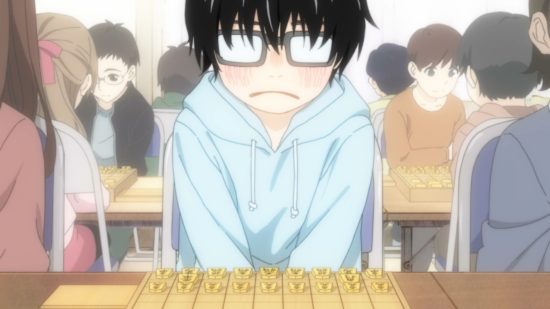
The series tells the story of Rei Kiriyama, a young professional Shogi player. It explores how the game affects his life and relationships, presenting Shogi as more than just a game – as a life path requiring dedication and passion.
"Summer Wars" (Hanafuda Game)
In this movie, Hanafuda is central to resolving the conflict. The characters play Koi-Koi, a version of Hanafuda, in the film's climax to defeat artificial intelligence. Playing Hanafuda becomes a metaphor for the competition between humans and machines, as well as a way to showcase family values and traditions.
"3-gatsu no Lion" (Shogi Game)
The anime depicts the life of professional Shogi player Rei Kiriyama. It explores his emotional struggles and development both as a person and a Shogi player. Shogi is not just a game here but also a metaphor for life's challenges and the pursuit of excellence.
"Akagi" (Mahjong Game)
The series follows Shigeru Akagi, a Mahjong genius who risks his life playing Mahjong against yakuza members. Mahjong is presented as a game of not only high stakes but also deep strategy and psychology.
 "The Legend of Koizumi" (Mahjong Game)
"The Legend of Koizumi" (Mahjong Game)
In this satirical political series, former Japanese Prime Minister Junichiro Koizumi plays Mahjong matches with international leaders. Mahjong is used to depict international relations and political strategies, with elements of humor.
Digital Innovations in Traditional Games
Many traditional Japanese games, such as Hanafuda or Karuta, have found new life in the digital world, gaining popularity among new generations. Hanafuda games like "Koi-Koi Japan" transform the classic card game into digital gameplay, introducing players to the rich history and culture. Other titles, such as "Hanafuda VR", use VR technology to immerse players in the world of Hanafuda. Similarly, Karuta-based games utilizing elements from "Hyakunin Isshu", such as "Utakoi" or "Ogoola Karuta", bring classic Japanese poetry into an interactive format, allowing players to delve into this traditional art.
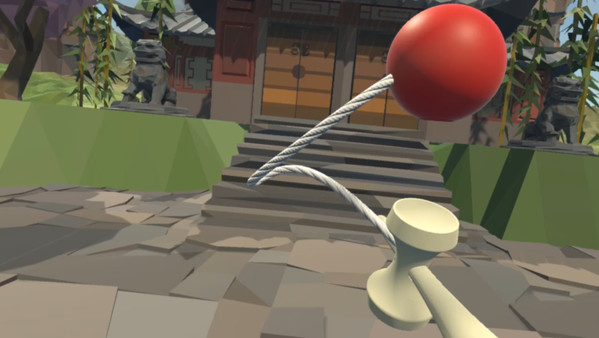
Conclusion
Traditional Japanese games, from Go and Shogi to Hanafuda and Karuta, are not just relics of the past but living treasures of culture that continue to resonate in the hearts and minds of people in Japan. Their presence in anime and computer games bridges ancient tradition and modern entertainment, testifying to their enduring charm and significance. These games continue their story, inspiring new generations to discover the wealth of Japanese history and culture. In this way, traditional Japanese games have not only stood the test of time but also found new pathways to thrive and fascinate, bridging the past and the future, culture, and innovation.
Renju (連珠)
Linguistic Analysis: "Renju" means "connected pearls".
Type of Game: A strategic board game.
Year/Period of Origin: Renju evolved from the game Go.
Circumstances of Origin: Created as a more complex version of Gomoku, the game gained popularity among players looking for a greater challenge.
Description: In Renju, players place stones on a Go board, trying to form an unbroken line of five stones, while blocking the opponent's moves.
Fun Fact: Renju is the professional version of Gomoku. It was the first board game to be played in a World Championship. The game has a large following in Japan, and many tournaments are held.
Bo Taoshi (棒倒し)
Linguistic Analysis: "Bo" means "pole" or "stick", and "taoshi" means "to knock over".
Type of Game: A team physical game.
Year/Period of Origin: The tradition of this game dates back to the 19th century.
Circumstances of Origin: The game originated from military exercises but became popular in schools as a team sport.
Description: Bo Taoshi is a dynamic game where two teams try to knock over the opponent's pole while defending their own.
Fun Fact: The name Bo Taoshi translates to "pole pull-down". It's often played as part of a sports day event in schools. There are usually 150 players in a game, divided into two teams of 75.
Irensei (囲連星)
Linguistic Analysis: "Irensei" comes from "i" (to encircle) and "rensei" (connected stars).
Type of Game: A strategic board game.
Year/Period of Origin: Less known date of origin, but it relates to traditional Japanese board games.
Circumstances of Origin: Board games were a popular form of intellectual entertainment.
Description: In Irensei, players alternately place stones on a board, trying to create a line of five connected stones.
Fun Fact: Despite its simplicity, Irensei requires strategic thinking and forward planning. It is a popular beginner's game for those learning to play Go. Irensei translates to "seven in a row".
Otedama (御手玉)
Linguistic Analysis: "Ote" means "hand", and "tama" is "ball" or "pebble".
Type of Game: A traditional Japanese skill game.
Year/Period of Origin: The game's popularity grew in the Showa period.
Circumstances of Origin: Games with small sandbags were a popular form of play among children.
Description: Otedama is a game where participants juggle and catch small bags filled with sand or grains, performing various tricks and sequences.
Fun Fact: The name "Otedama" comes from "te" (hand) and "tama" (ball). The game has a long history and was originally played with pebbles before beanbags. Various patterns of throws and catches are called with specific names.
Hana Ichi Monme (花一匁)
Linguistic Analysis: "Hana" means "flower", and "ichi monme" is a unit of weight (about 3.75 grams).
Type of Game: An outdoor children's game.
Year/Period of Origin: Popular since the Edo period.
Circumstances of Origin: The game was a form of entertainment and physical exercise for children.
Description: The game involves creating two teams, with one member alternatingly running towards the opposing team and trying to pull someone from the opposite team to their own, while maintaining rhythms and songs associated with the game.
Fun Fact: The name Hana Ichi Monme refers to an old Japanese unit of weight. The game is often used to teach teamwork and strategy. The game is usually accompanied by a song of the same name.
Beigoma (ベーゴマ)
Linguistic Analysis: "Bei" comes from "bi", meaning "shell", and "goma" means "top".
Type of Game: A skill game.
Year/Period of Origin: Beigoma has been around since the Edo period.
Circumstances of Origin: Initially played by children, it became popular as a skill game.
Description: Beigoma is a game where participants spin small, metal tops that then collide in an arena, trying to knock the opponents' tops out of the play area.
Fun Fact: The game's name Beigoma might have originated from the word "Bei", meaning America in Japanese, as the game was believed to be brought by the Americans. Beigoma tops are often decorated with colorful designs. The game inspired the creation of the popular Beyblade series.
Ohajiki (おはじき)
Linguistic Analysis: "Ohajiki" comes from the word "hajiku", which means "to flick" or "to snap".
Type of Game: A skill game.
Year/Period of Origin: The game has been known for hundreds of years in Japan.
Circumstances of Origin: Popular among children, it served as simple entertainment.
Description: In Ohajiki, players use small, flat discs which they flick with their fingers to hit and flip or move the opponent's discs.
Fun Fact: Ohajiki is often played by girls and is used to improve hand-eye coordination. The "pebbles" are traditionally made of glass. Ohajiki also refers to the game pieces themselves.
Daruma Otoshi
(だるま落とし)
Linguistic Analysis: "Daruma" is the name of a Japanese doll, and "otoshi" means "fall".
Type of Game: A skill game with wooden blocks.
Year/Period of Origin: The game's popularity rose in the Meiji period.
Circumstances of Origin: Skill games were popular among children and adults as a form of entertainment.
Description: The game involves using a hammer to hit individual blocks that make up a tower, trying not to knock over the Daruma figure at the top.
Fun Fact: The game is named after Daruma dolls, which are traditional Japanese wishing dolls. It is often played during festivals and children's parties. The game helps improve hand-eye coordination.
Fukuwarai (福笑い)
Linguistic Analysis: "Fuku" means "happiness", and "warai" is "laughter".
Type of Game: Family/party game.
Year/Period of Origin: The game was created in the Edo period as a New Year's entertainment for children.
Circumstances of Origin: The goal was to provide fun and laughter during the holidays.
Description: In Fukuwarai, participants blindfolded try to place facial elements (e.g., eyes, mouth) on a flat image, creating funny combinations.
Fun Fact: Fukuwarai is similar to the Western game of "Pin the Tail on the Donkey". The name of the game translates to "Lucky Laugh". It is often played as part of a New Year's celebration in Japan.
Koma (独楽)
Linguistic Analysis: "Koma" means "top" or "spinning toy".
Type of Game: Skill game with a spinning top.
Year/Period of Origin: The tradition of spinning tops in Japan is very old, though hard to pinpoint precisely.
Circumstances of Origin: Tops were common toys in many cultures.
Description: The game of Koma involves spinning a wooden top, often with elements of competition about whose top spins the longest or knocking opponents' tops out of a designated area.
Fun Fact: Koma is often played during New Year celebrations. There are professional Koma tournaments in Japan. The game helps improve fine motor skills and concentration.
Menko (面子)
Linguistic Analysis: "Menko" means "face" or "honor", which may refer to the images on the cards.
Type of Game: Card/skill game.
Year/Period of Origin: Popular in the Edo period.
Circumstances of Origin: The game was popular among children as a form of competition.
Description: Menko is a game where players throw flat cards on the ground, trying to flip the opponent's cards.
Fun Fact: Menko cards have been made from ceramics, clay, and cardboard throughout history. The designs on the cards often feature popular cultural themes. The game has been known to exist since the Heian period.
Sugoroku (双六)
Linguistic Analysis: The name means "double sixes", referring to dice.
Type of Game: Board game.
Year/Period of Origin: Known in Japan since the Nara period.
Circumstances of Origin: The game has its roots in the Chinese game "shuanglu".
Description: Sugoroku is similar to "Pachisi" or "Snakes and Ladders", where players move around a board according to dice rolls.
Fun Fact: Hanafuda cards were initially painted on mulberry tree bark. Despite being associated with gambling, the game is also enjoyed as a cultural and family game. Nintendo, the well-known video game company, was originally a playing cards company that produced among many: board games.
Uta-Garuta (歌ガルタ)
Linguistic Analysis: "Uta" means "song" or "poem", and "garuta" comes from the Portuguese "carta" (card).
Type of Game: Card game.
Year/Period of Origin: Popular since the Edo period.
Circumstances of Origin: Created for entertainment and education using poems.
Description: In Uta-Garuta, players try to find pairs of cards as quickly as possible: one with a poem, the other with a corresponding image.
Fun Fact: The game is typically played on New Year's Day in Japan. It is used as an educational tool to teach classical Japanese literature. There are national championships held for competitive Uta-Garuta players.
Hyakunin Isshu Karuta
(百人一首かるた)
Linguistic Analysis: The name means "karuta of a hundred poets", referring to a traditional poetry anthology.
Type of Game: Memory card game.
Year/Period of Origin: The game dates back to the Heian dynasty.
Circumstances of Origin: The game was created to enjoy and learn classic Japanese poetry.
Description: Karuta is a game where players must match poetry verses to their authors as quickly as possible.
Fun Fact: The game helps to memorize classic Japanese poems. There is an annual national competition for this game. Each card represents a different poem by a different poet.
Jan-ken (じゃんけん)
Linguistic Analysis: The name comes from the Japanese words "jan" (paper), "ken" (stone), and "pon" (scissors).
Type of Game: Skill game.
Year/Period of Origin: Known in Japan since the Edo period.
Circumstances of Origin: Derived from the Chinese game "sansukumi-ken".
Description: Jan-ken is a popular hand gesture game where paper beats rock, rock beats scissors, and scissors beat paper.
Fun Fact: The name "Jan-ken" is derived from the Chinese game introduced into Japan in the 17th century. It is one of the most common games in Japan and is often used to settle disputes. Some variations include additional hand gestures.
Kendama (けん玉, Kendama)
Linguistic Analysis: "Kendama" is a combination of "ken" (sword) and "tama" (ball).
Type of Game: Skill game.
Year/Period of Origin: Kendama arrived in Japan around the 18th century.
Circumstances of Origin: It originated from the classic French game "bilboquet".
Description: Kendama consists of a wooden hammer with 3 platforms and a spike, connected to a ball with a string. The goal is to catch the ball on one of the platforms or on the spike.
Fun Fact: Kendama is considered beneficial for improving hand-eye coordination. It has become a competitive sport with players around the world. There is a Kendama World Cup held annually in Japan.
Riichi Mahjong (麻雀, Mājan)
Linguistic Analysis: "Mājan" in Japanese literally means "chattering sparrow".
Type of Game: Logic game with elements of gambling.
Year/Period of Origin: Mahjong, though originating from China, became popular in Japan in the early 20th century.
Circumstances of Origin: The game was popularized as a form of urban entertainment.
Description: Players collect tiles to form a legal hand, using mechanisms like drawing, discarding, and winning by completing a specific set of tiles.
Fun Fact: Riichi Mahjong is also referred to as "the game of a hundred intelligences" due to its complexity. The game has a unique system of scoring, which includes a kind of gambling aspect. It is so popular in Japan that it is often portrayed in Japanese movies and TV shows.
Hanafuda (花札, Hanafuda)
Linguistic Analysis: "Hanafuda" can be translated as "flower cards".
Type of Game: Card game.
Year/Period of Origin: Hanafuda was created during the Edo period in Japan (17th-19th century).
Circumstances of Origin: Card games were popular in Japan but often banned; hanafuda was a way to circumvent legal restrictions.
Description: The game uses 48 cards, divided into 12 months, representing different flowers and seasonal scenes. Players combine cards to form combinations and score points.
Fun Fact: Hanafuda cards were initially painted on mulberry tree bark. Despite being associated with gambling, the game is also enjoyed as a cultural and family game. Nintendo, the well-known video game company, was originally a playing cards company that produced Hanafuda cards.
↵
Shogi (将棋, Shōgi)
Linguistic Analysis: "Shōgi" literally means "general's board game".
Type of Game: Japanese version of chess.
Year/Period of Origin: Shogi evolved from the Chinese "xiangqi" around the 16th century.
Circumstances of Origin: The game developed as a form of entertainment and tactical training for samurais.
Description: In Shogi, two players compete on a gridded board, moving different pieces with the aim of capturing the opponent's king. A unique feature is the ability to reintroduce captured pieces as one's own.
Fun Fact: Shogi is the shortest of the many forms of chess worldwide. The ability to reuse captured pieces makes Shogi a very complex game. Shogi boards are usually larger than chess boards, with a 9x9 grid.
Go (囲碁, Igo)
Linguistic Analysis: The name "igo" comes from the Chinese word "wéiqí", which means "encircling game".
Type of Game: Strategic board game.
Year/Period of Origin: The history of Go dates back at least 2500 years, with origins in ancient China.
Circumstances of Origin: The game was created as a form of meditation and strategic training for ancient elites.
Description: Go is a game for two players who alternately place black and white stones on a grid board, trying to surround and capture the opponent's stones, while controlling the largest area.
Fun Fact: It is believed to be the oldest board game still being played in its original form. The game is so complex, there are more possible game scenarios than there are atoms in the universe. Computers only recently became capable of beating professional Go players.
Traditional Japanese Games - A Bridge Between the Real World and Anime
How Did the Japanese Entertain Themselves Before Nintendo?
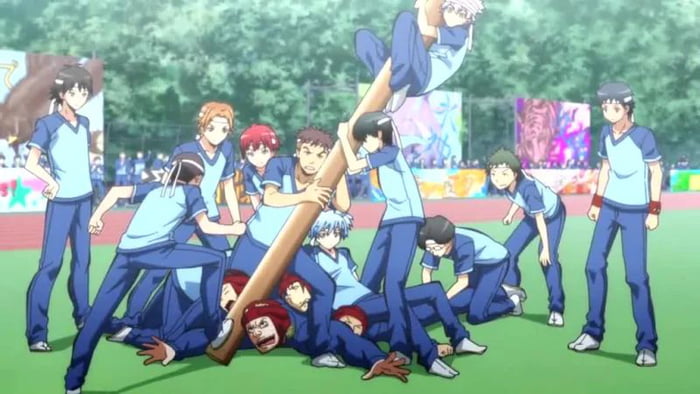
The influence of these games extends far beyond their immediate use, permeating into the world of anime, where they often serve as key plot elements, character development tools, or even as central themes of entire series. In video games or anime, traditional Japanese games not only bring an element of authenticity and cultural depth but also provide a platform where contemporary interpretations can be explored and represented to a global audience. The portrayal of these games in animation offers valuable insight into their unchanging place in the heart of Japanese identity, facilitating an understanding of their role in shaping society and culture.
Let's now take a look at twenty of the most popular social, card, sports, and board games in Japan:
"Strong Japanese Women"
see book by the author
of the page
未開 ソビエライ
An enthusiast of Asian culture with a deep appreciation for the diverse philosophies of the world. By education, a psychologist and philologist specializing in Korean studies. At heart, a programmer (primarily for Android) and a passionate technology enthusiast, as well as a practitioner of Zen and mono no aware. In moments of tranquility, adheres to a disciplined lifestyle, firmly believing that perseverance, continuous personal growth, and dedication to one's passions are the wisest paths in life. Author of the book "Strong Women of Japan" (>>see more)
Personal motto:
"The most powerful force in the universe is compound interest." - Albert Einstein (probably)
Mike Soray
(aka Michał Sobieraj)
Write us...
Ciechanów, Polska
dr.imyon@gmail.com
___________________
inari.smart
Would you like to share your thoughts or feedback about our website or app? Leave us a message, and we’ll get back to you quickly. We value your perspective!
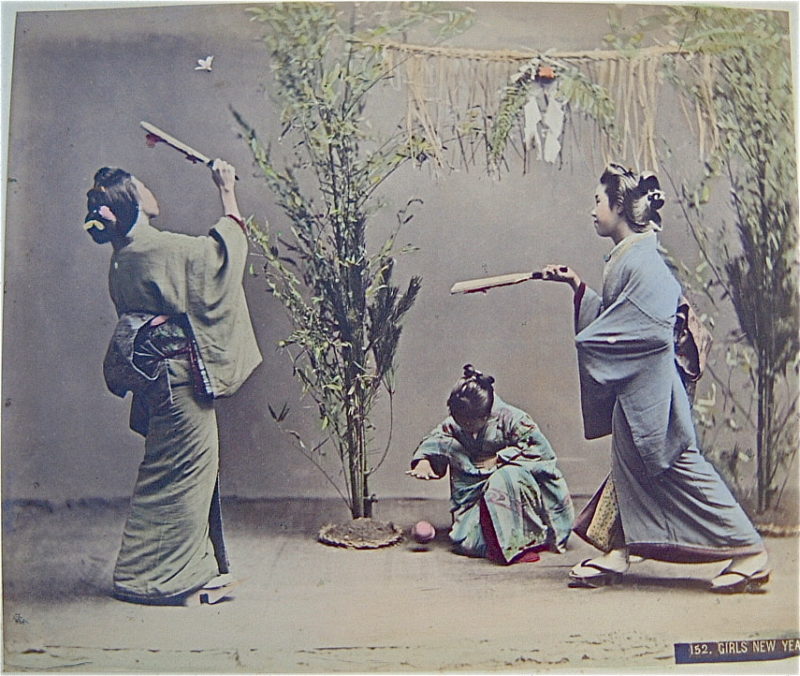 What Place Do Traditional Games Hold in Japanese Culture?
What Place Do Traditional Games Hold in Japanese Culture? 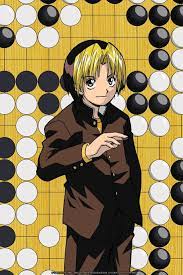 "Hikaru no Go" (The Game of Go)
"Hikaru no Go" (The Game of Go) 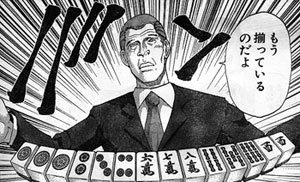 "The Legend of Koizumi" (Mahjong Game)
"The Legend of Koizumi" (Mahjong Game) 


